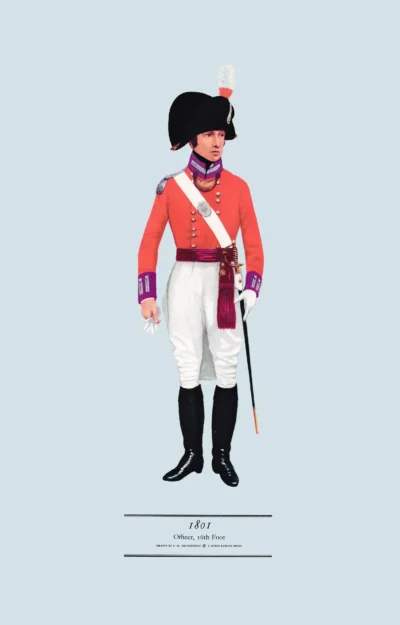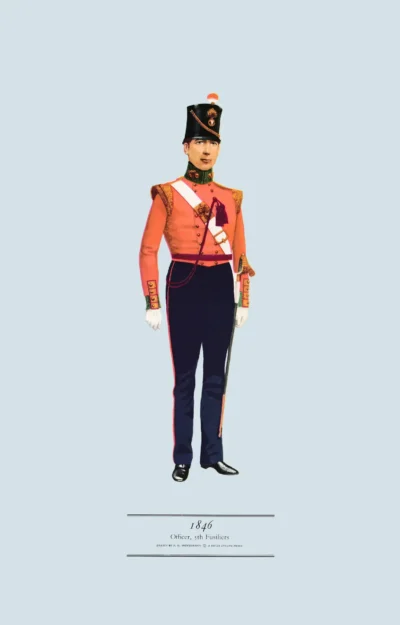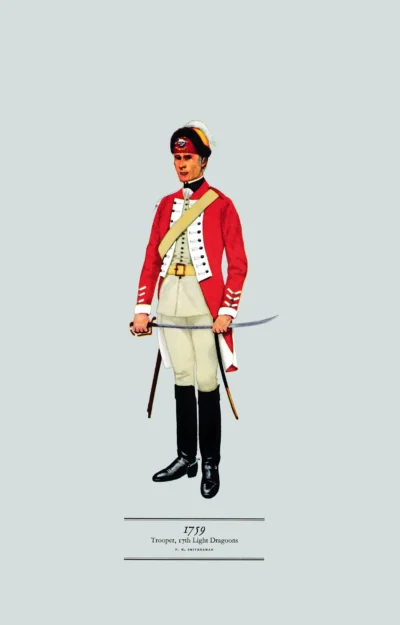Quartermaster Sergeant, 2nd Foot, 1802 (Queen’s Royal Regiment)
£12.50
The Queen’s Royal Regiment (West Surrey) was ultimately merged into The Princess of Wales’s Royal Regiment (Queen’s and Royal Hampshires) in 1964 (scroll down for a more detailed Description)
Published 1966 by © Hugh Evelyn Limited; drawn by Colonel Philip Henry Smitherman (1910-1982), Royal Corps of Signals
Size: c. 24.5 x 37.5 cm [9 ½ ″ x 14 ½ ″] (may vary slightly from printers’ cut 50 years ago)
Printed on on medium cardstock weighing 144 g/sm2 faced in light greyish blue (RGB c. d4e1e8)
Print is STANDARD size – shipping is the same for 1 to 10 prints (based on largest print size in your order) – see Shipping & Returns.
In stock
Description
The 2nd Foot were raised in 1661 to garrison Tangier, which came with Catherine of Braganza she married King Charles II. Originally the Tangier Regiment, then the ‘Queen’s’ regiment (in honour of Catherine, whose crest, the Lamb, was their badge). They served under Kirke in the Bloody Assizes and acquired their nickname ‘Kirke’s Lambs’, and under Howe in 1794 on the ‘˜Glorious First of June’ for which they were awarded the badge of a naval crown – one of their colours. Throughout their long history they have been famous simply as ‘The Queen’s‘ but today are part of Princess of Wales’s Royal Regiment. Before 1802 the rank of NCO was shown by epaulettes and shoulder knots. In 1802 it was ordered that these ranks be indicated by chevrons – sergeant majors to have four, sergeants three, and corporals two. At first, it was uncertain if the chevrons were to be worn proper (as here) or inverted, as mostly worn today. An 1803 order stated the point was to be worn downwards. Sergeant majors, quartermaster sergeants and drum majors wore them this way, just above the cuff, at the end of the nineteenth century, and drum-majors wear them so today. As befits a senior N.C.O. this uniform resembles that of an officer. His sash, sword-belt and plate, hat-feather, black silk stock and white collar are all like those of an officer. A sergeant major would have been dressed similarly, except with silver lace instead of white tape shown here.
Source: Contemporary oil painting at one time in the possession of the Parker Gallery.
Additional information
| Weight | 0.0131 kg |
|---|---|
| Dimensions | 23 × 37 cm |





